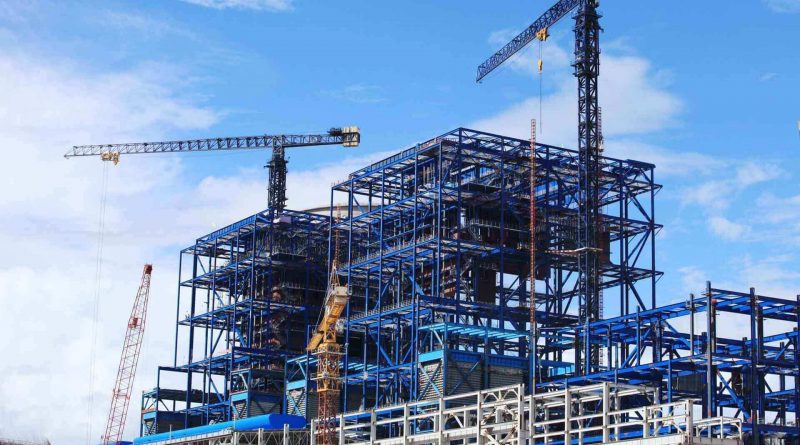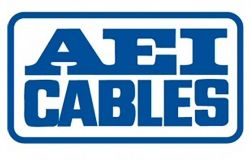Raising standards, saving lives
Raising standards, saving lives
With the protection of lives and property now a major issue in the UK for the safe development of the next generation of modern buildings, the choice of cabling which powers the safety features has come under increasing scrutiny. Here, Graham Turner of AEI Cables examines the issues.
The requirement for continuity of power in new complex modern public buildings in which large numbers of people move about has never been more important in the event of a real fire.
Ultimately, this means choosing the most relevant cabling and electrical accessories which will continue to operate under fire conditions.
With power for lighting and fire alarms, the fire and rescue services can use the information gathered to evacuate people quickly, confident that they have found all the people in the building.
Without power, they are literally scrambling in the dark without good information upon which to make their rescue. The continuity of power will also ensure that sprinkler or water mist systems can continue to operate where they exist. In commercial buildings, there may also be smoke evacuation fans which help to enable safe evacuation.
At the start of a project, the most appropriate cabling should be specified as part of the electrical system rather than at the end of a project. Fire alarms may be digital, with loop systems which will provide information for fire and rescue services across individual areas and floors.
At the same time there are new designs, materials and products continually coming on to the market for major projects, and with it an increasing need for the various parties involved to work closely together to make sure they get it right.
Decision-making
For some buildings, it is crucial to select the highest quality products to meet the most rigorous third-party tests and real-life fire scenarios.
These include environments such as hospitals, schools and care homes where older people and children move about.
For instance, specifiers looking at new large public sector projects such as hospitals should refer to BS 8519 for the electrical supply, and the most relevant cabling system.
This Code of Practice specifies that the type of system selected during the design phase ‘should be derived from a detailed process of consultation with the relevant authorities’ and that ‘the design should be agreed at an early stage.’
The decision-making process for cable selection relevant for life safety and firefighting systems is clearly defined here.
This covers three categories ranging from 30 minutes to 120 minutes fire survival time. Categories 1 and 2 cover means of escape for 30 minutes and then 60 minutes respectively, and these cables are tested in accordance with the relevant codes.
Category 3 for firefighting to 120 minutes refers to power and control cables meeting the 120-minute test according to the relevant standards. It should be emphasised that only Mineral Insulated Cable (MIC) or an enhanced cable meeting the requirements of BS7846 F120 will meet this criteria.
For clarity, BS 8519 does not take precedence over BS 5839 for alarm systems and BS 5266 for emergency lighting.
The best practice under Business Information Modelling (BIM) and all best practice of fire safety engineering methods should be observed in conjunction with project partners.
There have been concerns over a number of years around the fire protection regime for new buildings expressed by the architects and designers themselves. The Royal Institute of British Architects (RIBA) points to the delays to Approved Document B with regard to the relationship of Building Regulations to changing design and construction.
Issue for concern
RIBA is anxious about creating an Approved Document which together with related British Standards provides a very comprehensive but highly complicated regulatory framework.
The architectural group is also concerned about the impact of the Regulatory Reform (Fire Safety) Order 2005, in particular the introduction of a regime of fire risk self-assessment and the repeal of fire certificate legislation overseen by the local fire authority.
It also says it is worried that the lead designer – architect or engineer – is no longer responsible for oversight of the design and the specification of materials and products from start to completion of the project, with design responsibility often transferred to the contractor and sub-contractors, and no single point of responsibility.
RIBA says the virtual disappearance of the role of the clerk of works or site architect and the loss of independent oversight of construction and workmanship on behalf of the client is a further issue for concern. In essence, RIBA believes that future proposals for the fire safety regulatory regime should be informed by the specialist fire safety expertise of relevant professional organisations and groups, and also take full account of this wider set of construction industry regulatory, practice and process issues.
As the inquiry into Grenfell unfolds, it is clear that Part B of the Building Regulations for fire safety will come under further scrutiny, especially where projects may have been compromised in the past for whatever reason.
Dame Judith Hackett, who is leading the Grenfell inquiry, sums it up: “As the review has progressed, it has become clear that the whole system of regulation, covering what is written down and the way in which it is enacted in practice, is not fit for purpose, leaving room for those who want to take shortcuts to do so. What is initially designed is not what is being built, and quality assurance of materials and people is seriously lacking.”
AEI Cables provides a full range of cabling products through its Total Fire Solutions service with the support of its parent company Ducab based in Dubai, with the design, manufacture and supply of MIC, Firetec Enhanced or Firetec Power depending on specific needs. We believe the electrical industry supply chain should increasingly work together to get it right. There can be nothing more important where lives and property are at stake.
For further information tel 0191 410 3111 or email enquiries@aeicables.co.uk. See www.aeicables.co.uk
Published May 2018


